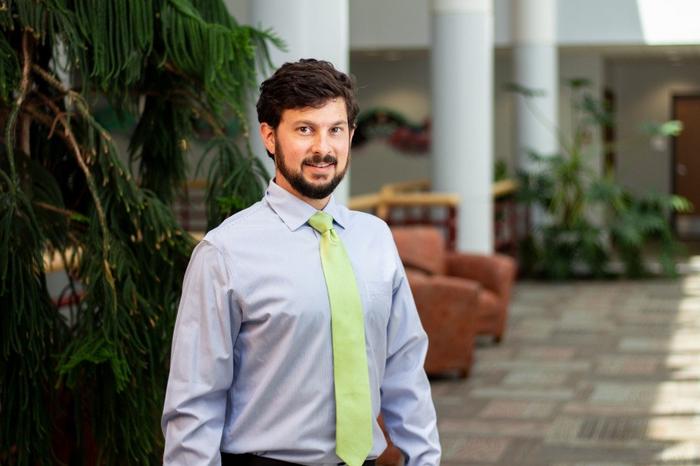Clay Wright, assistant professor in the College of Agriculture and Life Sciences’ Department of Biological Systems Engineering, was awarded a prestigious Maximizing Investigators’ Research Award (MIRA) from the National Institute of General Medical Sciences, part of the National Institutes of Health.

Credit: Photo by Tim Skiles for Virginia Tech.
Clay Wright, assistant professor in the College of Agriculture and Life Sciences’ Department of Biological Systems Engineering, was awarded a prestigious Maximizing Investigators’ Research Award (MIRA) from the National Institute of General Medical Sciences, part of the National Institutes of Health.
The funding is aimed at providing the investigator, versus a specific project, enhanced stability and flexibility for further discovery, enhancing scientific productivity and the chances for significant breakthroughs outside the initial scope of the project.
This recognition supports Wright’s innovative work in understanding and engineering common cellular signals, a critical mechanism shared across animals, plants, and fungi. These signals are sent through a process called ubiquitin signaling.
This system works like a recycling center inside all living things by helping cells adapt to their environments by breaking down old proteins and making new ones. This system is important for plants because it helps them grow and deal with stress like pests.
“Our goal is to understand how this system works and to make it better,” Wright said. “We do experiments with yeast and use robots to help us with our research. By learning more about this system, we hope to find new ways to treat diseases and make plants grow more efficiently and robustly in the face of climate change.”
Wright’s research aims to understand and engineer the molecular mechanism of how information is transferred through these ubiquitin-proteasome signaling pathways and how these hormone-signaling and biosynthesis pathways have coevolved in plants and other eukaryotes, or animals, plants, and fungi.
To do this, the research looks for differences, or mutations, through a genomic technique called massively parallel functional assays. The team is using a protein degradation biosensor that they recently developed.
“We’re working toward evolving enzymes called ubiquitin ligases to help them identify both known and new chemical compounds,” Wright said. “These enzymes could work as tiny sensors and controllers within cells, helping us get a better grip on how biological systems operate. By doing so, we hope to enhance our understanding and ability to manipulate these systems, leading to more sustainable ways to produce important plant hormones and related chemicals.”
These molecular tools could improve our ability to manipulate, control, and engineer biological systems for applications from health care to agriculture.



